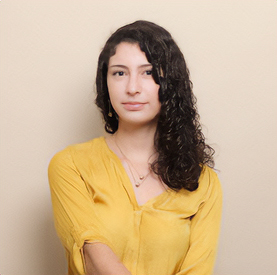The hidden rules and structure of Korean dating
![Young couple in campus [SHUTTERSTOCK]](https://koreajoongangdaily.joins.com/data/photo/2023/03/03/68901855-e72d-4a5d-98dd-68472486a19a.jpg)
Young couple in campus [SHUTTERSTOCK]
While enjoying lunch, my friend suddenly asked, “Would you let your boyfriend help a friend struggling to pick up sticky kkaennip [sesame leaves side dish]?” Blindsided by the question, I was unsure how to respond — I think I would simply not care. Yet, the question is divisive among Korean netizens. The viral debate is one of the many Korean dating quirks that perplexed me.
Riddled with names, dates and unwritten rules, unique aspects of Korean dating culture, such as sogaeting (blind dates) or sseom (the talking stage), fly over my head.

Laura Senior Primo
I brought up the subject with my professor, Prof. Irene Yung Park of Yonsei University's culture and comparative literature department, and she confirmed that it was not all in my head.
Park explained that “dating” is a relatively new social concept in Korea, that expanded in the 1960s with the affective family structure. The affective family is today's modern concept of family, one where love is a preliminary condition to marriage. Before its introduction, the Confucian family model, one where marriage was a means to secure social and economic stability, was standard.
“If you want to marry for love, you need to meet someone, get to know them, and fall in love. Dating is a direct result of the introduction of the affective family,” Park remarked. Due to Korean dating culture's relatively recent introduction, Korean society's dating practices were created primarily out of social need instead of pre-existing norms.
Besides being a relatively new concept, I still could not grasp why meeting someone you might date is such a systematized practice. Unlike in the West, setting up your friend with someone they might like is customary when meeting a potential partner in Korea. And while some of my Korean friends prefer jamanchu (meeting people naturally), most couples I know met through sogaeting, the inmanchu (meeting people through blind dates) way.
Park was not surprised, “The way society and socialization works makes it challenging to meet a partner naturally after college. A situation where two people can slowly get to know each other rarely unfolds, unless you create it,” she said.
Korean society is still tightly divided by age and gender despite changing dynamics. Compared to other nations, women tend to socialize more with women and men more with men. The gendered division creates little opportunity for spontaneous meetings, cultivating a more standardized dating culture.
Another puzzling Korean dating aspect is sseom. The first time someone asked me if I was "in a sseom," it took me aback, and all I did was nervously laugh. It seems more normal now, as I understand it to be similar to the West's "talking stage," with a few key differences.
For one, sseom only lasts about a month; if it exceeds that, they would be considered to be dragging on the situation — a lousy faux-pas in Korea's more conservative society. While it is custom only to be "talking" to the person you are in a sseom with, after three dates, it is etiquette to start officially being exclusive — what I came to understand as the "3-date-rule." Ending the sseom, you can get to know each other more closely while in a relationship.
"In the [West], people usually meet with a potential partner casually, then go out together and get to know each other without any commitment. You go on dates to discern whether you like them or not," explained Park. "In Korea, the step where you move toward being a couple is much more abrupt."
The sseom's relatively short span can be related to its novelty within the Korean social structure. As a transitional stage where two individuals are not a couple but also are not just friends, sseom is an almost indefinite status and is hard to socially classify. Without this proper classification, society tends to reject its position as a phase in relationships.
I asked Park where all these implicit structures come from. Surprisingly, she said dramas and movies played an influential role in creating dating habits. Immediate aspects of dating culture, like couple looks or the famous line "today is our day one," are often fed to people by the media.
"Since Korea is a collectivist society, social trends propagate very quickly, which might not happen in more individualistic societies," explains Park.
She set the example of wearing school uniforms. In 2001, Korean movie "My Sassy Girl" introduced a trend, where the lead couple goes to a nightclub dressed in high school uniforms. The trend stuck, and now it is common to see young adults dressed in high school uniforms in theme parks or other locations and even shops to rent the outfits.
While I still ponder why sesame leaves would be something of any importance, I see the place of little debates and trends in the relatively new dating culture in Korea.
BY STUDENT REPORTER LAURA SENIOR PRIMO [kjd.kcampus@joongang.co.kr]










with the Korea JoongAng Daily
To write comments, please log in to one of the accounts.
Standards Board Policy (0/250자)